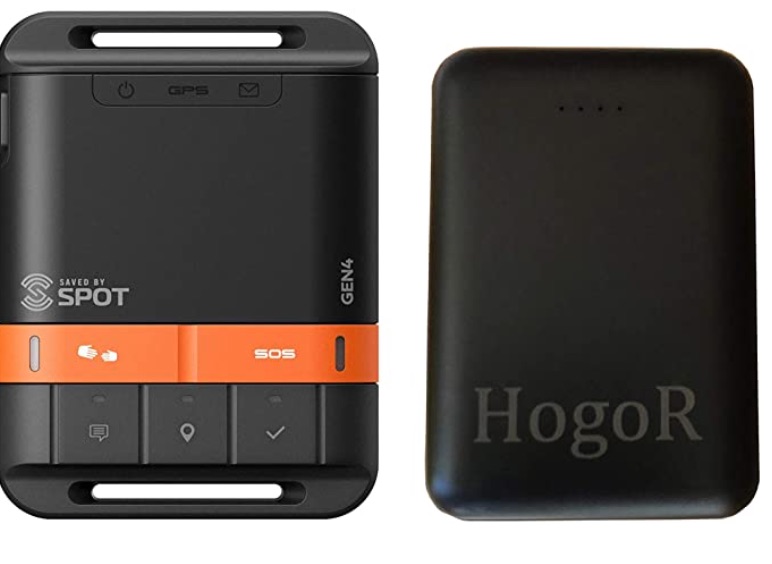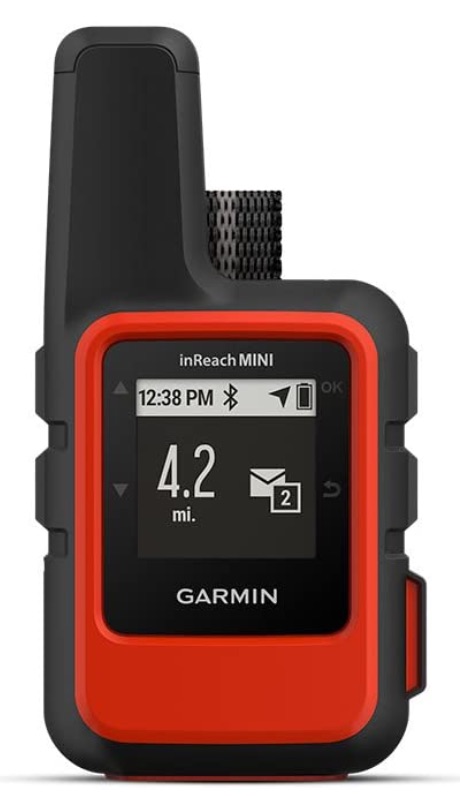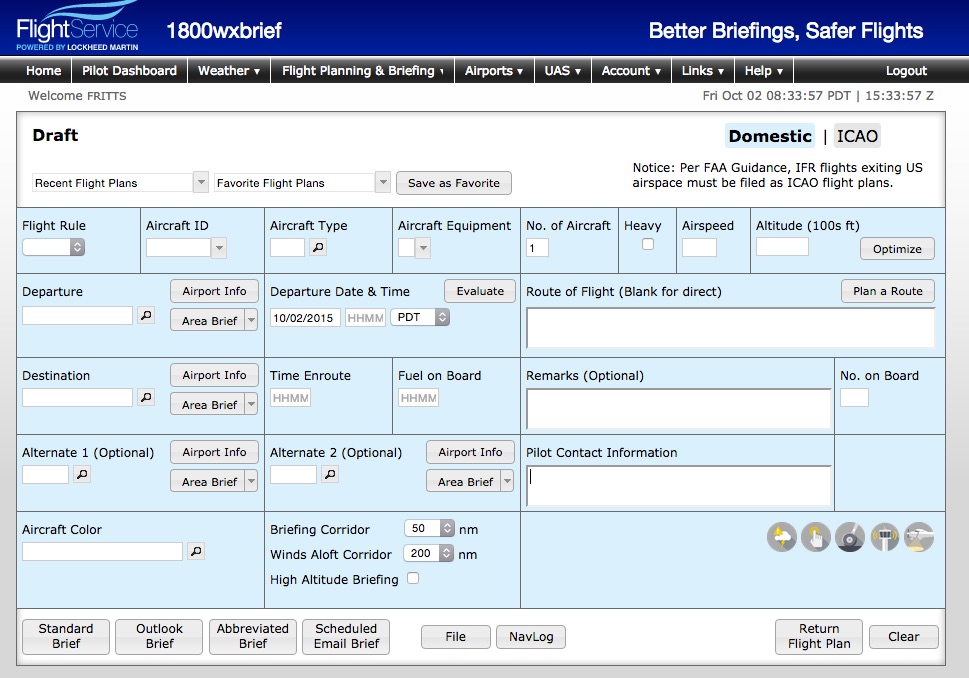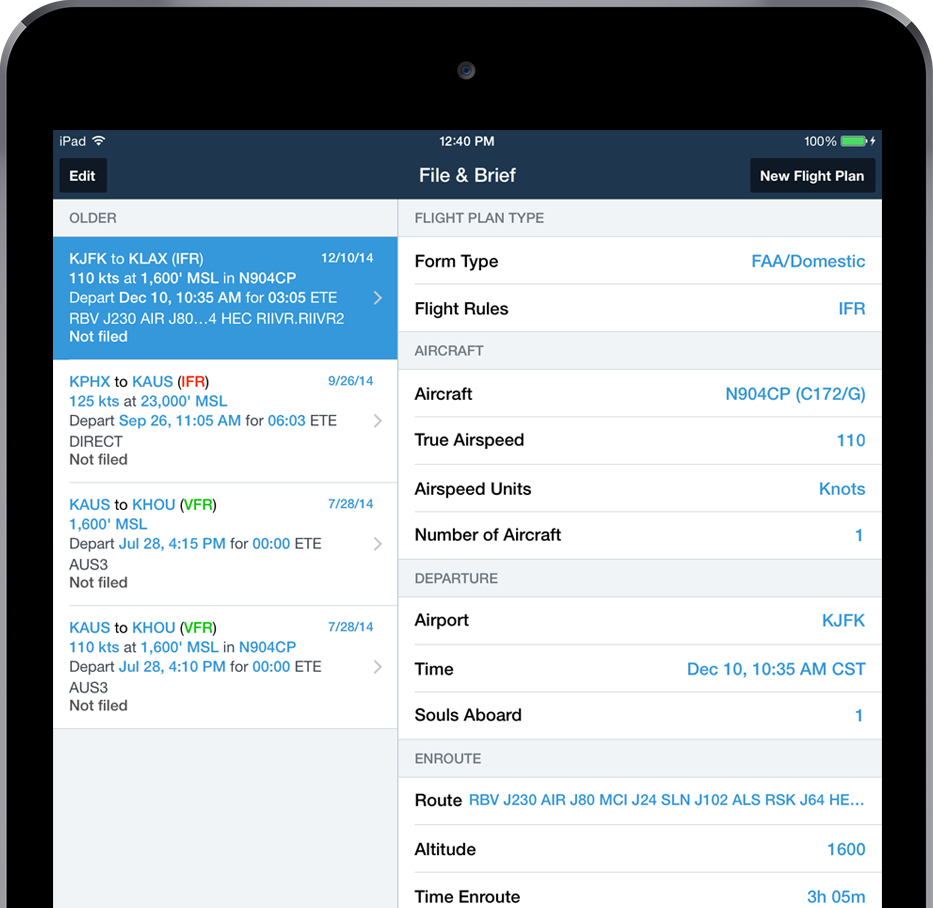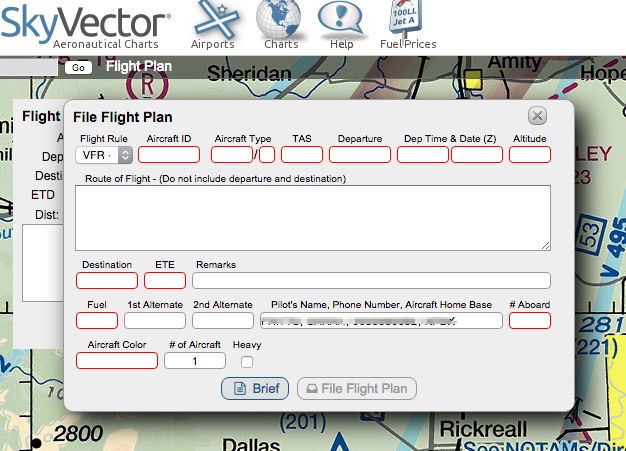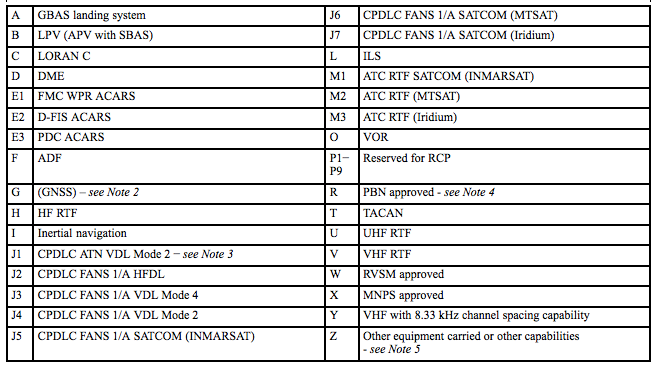Every pilot has to eventually leave the traffic pattern and venture away from the safety of their local airport. Before you go on a cross country, though, you need to know how to file a VFR flight plan.
Let’s start with the basics first because it’s important you understand the function of a VFR flight plan. Then I’ll cover how to file a VFR flight plan and the specific elements of the VFR flight plan.
Why should pilots file a VFR flight plan?
The VFR flight plan serves one purpose: it helps rescue workers find your aircraft if you crash.
Yes, that’s the only reason. It’s a tracking tool for search and rescue.
Keep that in mind when you fill out your form and open your VFR flight plan. Look at the flight plan from the perspective of a search and rescue worker as you fill it out. Be detailed enough they can find you.
Here is the VFR (and IFR) flight plan for from the FAA:
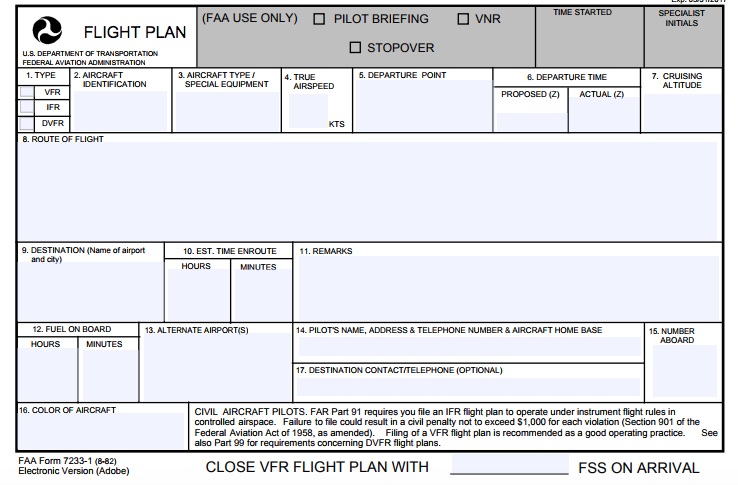
Do you have to file a VFR flight plan to fly VFR?
No (with one exception).
Unlike, IFR flight plans, VFR flight plans are not usually required, but they’re highly recommended.
Remember VFR flight plans help emergency workers find you if you crash. If you never file and open a VFR flight plan, no one will look for you.
Before you go flying off into the sunset without a flight plan, think about the repercussions of your decision.
The one exception for a requirement to file a VFR flight plan is if you fly out of a Class C or B airport. At these airports, they may require you to call clearance delivery to get a squawk prior to taxi as if you are an IFR aircraft.
I tried once to do a routine maintenance flight out of KPDX. We normally always file IFR. When I contacted ground for taxi instructions they told me to contact clearance and file a VFR flight plan.
The one advantage of having to file a VFR flight plan out of a Class B or C airport is they will open the plan for you when you take off. There’s no need to call in the air.
If you hate to file flight plans, you can take the search and rescue piece into your own hands. I actually recommend these devices for pilots regardless of whether they file VFR flight plans. They are about 1000 times more effective than a flight plan.
There are two types of devices every pilot should consider purchasing:
An emergency beacon like the ACR ResQLink
The Beacon is just that, it sends out a signal if you crash. You have to physically push the button, however, so it will not help you if you are incapacitated.
It will send exact coordinates to emergency workers and they will come and get you immediately provided the beacon is registered with NOAA’s Search and Rescue Satellite Aided Tracking.
An expensive but more effective solution to search and rescue is the Spot Tracker (or the Garmin InReach). These products allow your loved ones to monitor the progress of your flight online. Even if you’re incapacitated, they will find you. You can send also pre-programmed texts. These also can send an emergency distress signal like the ACR beacon above.
These require a subscription. I believe the cheapest is about $12 a month, but it’s well worth it especially for those who fly out West. The two best trackers are the Spot Gen 4 and the Garmin InReach
How to file a VFR flight plan
There are several ways to file depending on your comfort level with technology and your budget.
Here are four ways to file a VFR flight plan in no particular order:
Call 1-800-WX-BRIEF
- This is the old school method. I don’t recommend it unless you’re in an area with no WiFi. As long as you have a phone you can file a flight plan. They will give you NOTAMs, weather and take your flight plan all at once.
- Always have a flight plan form in front of you. The briefer will expect you to rattle off the required information on the form starting at #1. It’s painful if you don’t have it in front of you.
- You can print off the flight plan form by clicking here: FAA Flight Plan. Keep it in your flight bag or on your phone.
- I personally don’t use this method anymore. I can file and get all the weather and NOTAMs much fast through Foreflight. Plus, I am a visual person. I need to see the weather graphics, so a phone call doesn’t help me.
Use 1800wxbrief online
- If you don’t want to call, and you have a computer handy, you can file through the 1800wxbrief website.
- You will need to set up an account first, but it only takes a minute.
- This is run by the same company that does the phone calls, it’s just their website version. Again, there are better ways to file.
Foreflight
- This is my personal favorite method, but it will cost you at least $99 a year or more depending on your subscription. You also need an iPad or iPhone. I can’t say enough about this program. It’s incredible. I bought an iPad just so I could use this program.
- Foreflight saves your aircraft info making filing even faster the next time.
- Foreflight will email you a complete weather brief after filing. It compiles a complete flight pack you can flip through with NOTAMs and any other pertinent information along your route of flight. It’s incredible.
- You can also now hit a button and it will open your flight plan for you.
- You don’t have to call the FSS in the air to open your flight plan! I accidentally forgot to open my flight plan on the ground and I was able to open it in the air. Luckily I was low enough to still have cell service. Otherwise, I would have had to call over the radio.
Fltplan.com
- This is by far the most popular free flight planning software. This is an excellent alternative to Foreflight and I highly recommend it.
- I used it every day at my Part 135 job because we didn’t have Foreflight. A lot of corporate operators use this program. You can print the briefing packet to take with you on the airplane.
- You will need to set up an account and set up an aircraft profile first. Make sure the aircraft information is accurate or the fuel burn and time won’t be accurate!
How to file a VFR Flight Plan on FltPlan.com
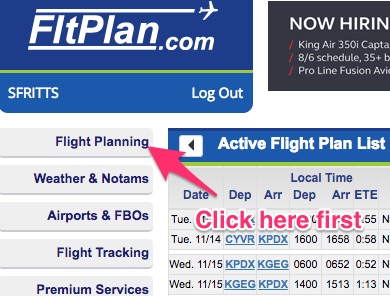
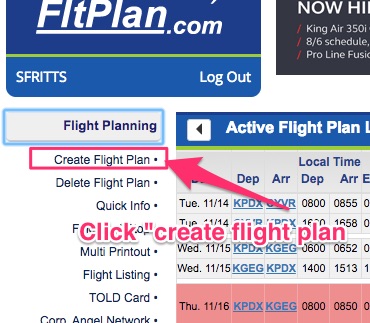
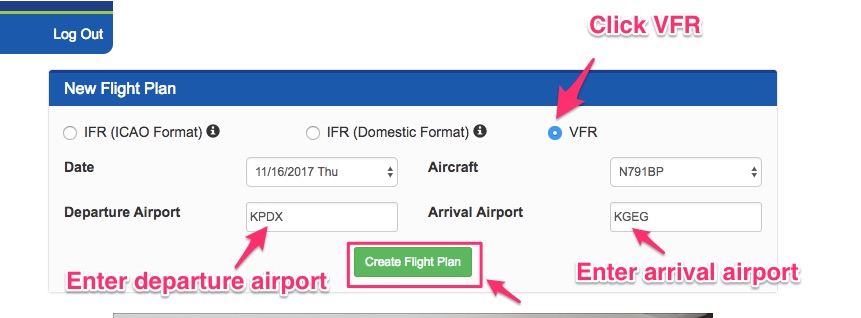
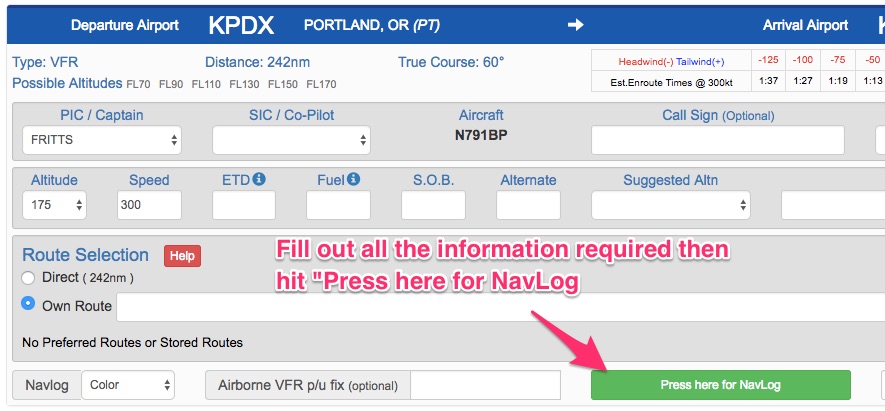
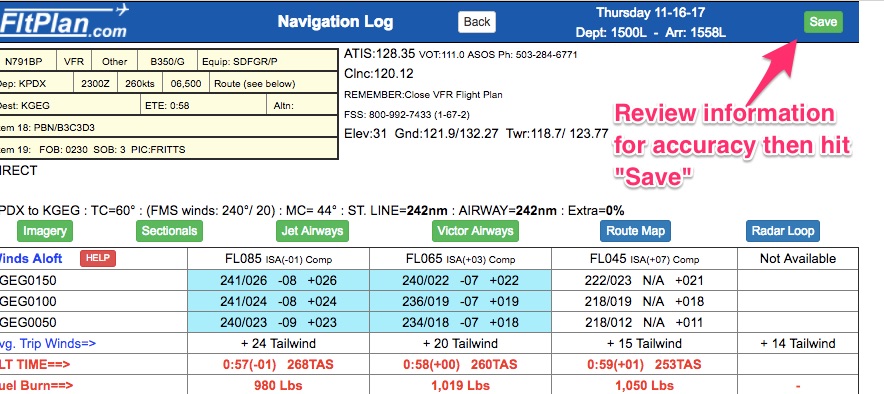

That’s it. Pretty easy.
Skyvector.com
- You don’t need money for this method, but you do need an email address, login, and a computer. Skyvector.com is an excellent free flight planning tool. It’s similar to Fltplan.com, but it has a much nicer design and interface. Either one will work. Stick with one so you get good at it.
There are other ways of filing, but these four are the best.
How do you fill out a VFR flight plan?
I recommend you keep the template for a VFR flight plan on your kneeboard or digitally on your iPad. It’s helpful to reference when (if) you call the FSS.
Click here for the link to the PDF version of the FAA form 7233-1 VFR Flight Plan.
Let’s get into the nitty-gritty of the flight plan.
1. Flight Rule:
- VFR, IFR or DVFR. These are pretty self-explanatory. If you aren’t instrument rated you can only file VFR.
- If you don’t know what DVFR is then you shouldn’t be filing it.
2. Aircraft ID:
- Use the full five digits of the aircraft. Some aircraft have less than five digits, just make sure you use the entire aircraft ID.
3. Aircraft Type/Special Equipment: Reference Table 5-1-4 in the AIM.
Below is a list of the codes for the type of equipment you may have on board. By far the most common is the “Slant Golf.” Which means your aircraft has GPS capability.
Star with the aircraft identifier then add a slant and then the special equipment code.
For example, the EC145 helicopter is EC45/G. The King Air 350 is BE30/G.
The aircraft identifier is NOT intuitive so do a little Google research to figure out your aircraft’s identifier and special equipment.
- Note: If you don’t know what your aircraft type and identifier then ask! Don’t guess!
4. True Airspeed
- Use software to compute. It is NOT your indicated airspeed. Check out the article I wrote on True Aipseed if you need a quick refresher.
5. Departure airport ICAO identifier
- For example KSLE. Each country has its own identifier. Check out this Wikipedia article for a list of all the ICAO country identifiers.
- Alaska has a “P” identifier, by the way. Don’t use “K” as that’s only for the contiguous United States.
6. Proposed Departure time
- This must be in ZULU time. I recommend you get a watch that gives you Zulu time or download a Zulu time app on your phone.
7. Cruise Altitude
- For VFR use thousands plus 500 feet (i.e. 6500’…..even numbers going west and odd going east)
- The West Coast states use even going North and odd going South. (ie. From Seattle to LAX use 17,500′ and coming back north you would use 16,500′)
8. Route of flight
- Do not be lazy and file direct. The only purpose of a flight plan is for search and rescue. Don’t go overboard with the waypoints. Be realistic, but provide value to your rescuers.
- Note: Think twice about deviating from your flight plan. Once you go off course you may never be found.
9. Destination airport
- This is self-explanatory
10. Time en-route
- Use current wind calculations at cruise altitude to get an accurate time. Foreflight and Fltplan.com will do this for you provided you entered the correct and complete information into the aircraft data section.
- Add a little bit of padding to account for longer taxi/run-up times, but not so much that you die because it took too long for search and rescue to find you.
11. Remarks
- The AIM suggests adding in a telephone number the rescue workers can call in case you do not close your flight plan within 30 minutes. This is an excellent suggestion.
12. Fuel on board
- You must have appropriate fuel reserves for your type of flight regime.
- During the day you must have 30 minutes extra from your total flight time in Block 10. At night, 45 minutes.
13. Alternate airport
- You shouldn’t need to enter anything here for a VFR flight. This block may be mandatory for some IFR flights.
14. Pilot’s Name and contact
- Give them your cell phone! If you forget to cancel your flight plan you want them to call you immediately.
15. Number on Board
- People…..not animals
16. Color of the aircraft
- Use the predominant color
That’s it!
Remember, flight plans only work if you open your flight plan in the air with the closest Flight Service Station. Or if you open with through your phone before you takeoff (Foreflight offers this function).
Also, opening a flight plan is NOT the same as getting flight following with Air Traffic Control. They are two separate things.
Flight following offers the highest level of protection and safety. I highly recommend it.
Check out these articles on How to Open Your VFR Flight Plan and the other vital step of How to Pick Up VFR Flight Following.
Notice: This article contains affiliate links. I get a kickback from Amazon if you purchase the product I recommend through the link I provided in this article. It doesn’t cost you a thing to use the link. The money helps me run this website. I never suggest products I don’t recommend or use.

